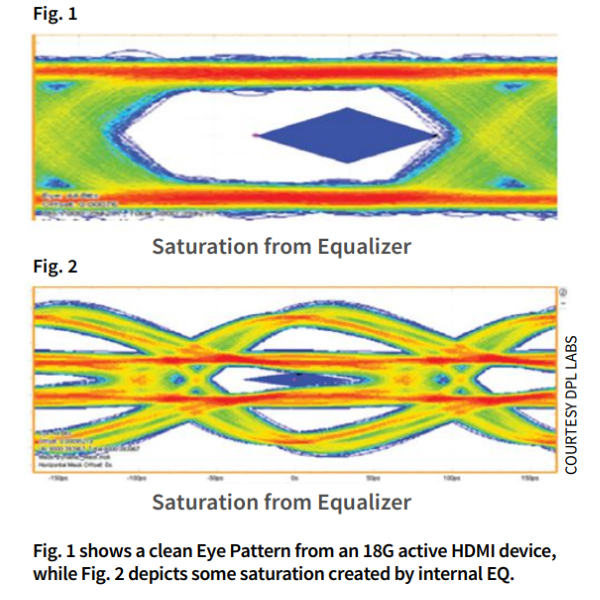Click here to read the article on CEPro.com
HDMI corner BY DPL LABS
WE’RE BEGINNING to see some really cool 48G active products coming down the pike that are also showing really good test results. However, we are still hearing concerns about interoperability; most manufacturers have been bitten by active products failing in the past. Rightly so, since there was so much of this going on and it is still occurring — a sense of awareness should be practiced.
Here’s a quick refresher. In our testing, as we began using more long-distance HDMI at the 18G level, extenders and active cables started adding all kinds of new technologies to provide the necessary recovering electronics for these higher data rates. This was welcome — now, getting past 7 or 8 meters with copper was doable and in some cases these products even went out 30 meters. Quite the achievement!
However, interoperability issues started popping up with no rhyme or reason. These products produced great-looking test results but still these issues persisted. As discrete AOC (active optical cable) products entered the picture, these manufacturers found that they too were not immune and started having interop issues. And with fiber there were compound issues struggling with the same video saturation problem, plus some poor Status and Control properties due to inadequate DDC integrity.
DPL identified these shortcomings early on. For example, Fig. 1 demonstrates an Eye Pattern that is open and somewhat clean coming out of an 18Gbps active device. This can be copper or fiber. Due to the internal EQ correction found in displays, you get an extra boost as depicted in Fig. 2. These were perfectly fine signals that went into massive saturation when being equalized for a second time in the display.

Needless to say, there were some unexplained failures. Some fiber companies quickly caught wind of this and corrected it by intentionally lowering their output signal to allow the internal EQ correction in displays to do their job and bring it back naturally. In other words, as odd as it sounds, you work hard to get the signal to 100 meters with this highspeed data and when it arrives at its destination you intentionally make the signal worse… so it can work better. Huh? Well guess what, it works, and it works pretty darn good.
Cable manufacturers do try to avoid recurring problems from past experiences, so you can see why they tend to be a bit more skeptical as new developments with active cable products surface. But perhaps the HDMI group tried to work this out?
Back in the ethernet world, there were similar issues with long-distance applications that were rectified with a new, very effective technique. It was known as “Link Training,” a mechanism that managed to control and limit the data speed used on the bus by learning what was being offered and adjusting the incoming data rate down to handle it. HDMI adopted close to the same technique in Rev 2.1. However, at best you may reach 3 or even 4 meters passively on a good day, that’s it. But can Link Training have any side effects with the hardware used? We’ll discuss more on Link Training in the next Corner.
Yes, all we need now is some increased power on the bus and it will be in good shape for all active products. Only one catch — with HDMI Rev 2.1 the Link Training instructions are done inside Status and Control, our good ol’ friend the DDC channel, which many fiber companies are still contending with today. The sharp guys have solved this, so know what you are buying when it comes to this issue, or it could sting you.




0 Comment